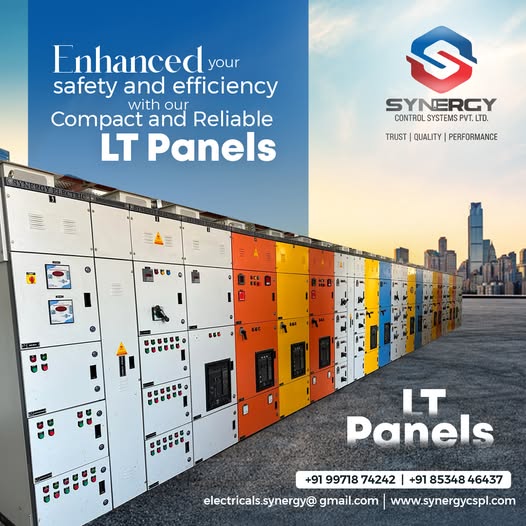The electrical supply in modern buildings is more sophisticated compared to older times. For instance, consider a multi-storey building with offices. It would contain around a hundred computers, several air conditioners, Ethernet, lighting systems and many sensor-based devices for the convenience and safety of occupants. Managing the supply of electricity to all the circuits individually by miniature circuit breakers is not feasible. MCBs may work fine for domestic uses, but when the larger load is there to manage, the building needs low-tension panels. LT panels are a common feature at the building facility. It receives power from the transformer and distributes it across the various circuits in the building. Synergy System is one of the best LT panel manufacturers with a great reputation in the industry. In this blog, we will learn how these panels distribute power efficiently across the large building infrastructures.
Key Function of LT Panel
The key function of the LT panel is to receive low voltage (up to 1.1 kV) power from the distribution transformer and distribute it across the different circuits in the building. Many commercial buildings and industrial facilities work with low voltage class, i.e., within 1100 V. It is mostly used for voltage requirements higher than 230 V, therefore, we may not see it in domestic applications. However, it may be used in multi-storey residential homes to manage their power distribution.
How LT Panel Works
The main components of LT panels are circuit breakers, busbars, control relays, terminal blocks, wiring and grounding terminals. Here are the steps involved in the function of LT panels:
- The panel receives power from the distribution transformer or generator, depending on the power supply available. Generators are backup sources, while a transformer is a continuous source.
- The power supply is controlled and monitored by the main circuit breaker in the panel.
- A busbar is where the multiple circuits of the infrastructure are connected in a single unit. It distributes current to these circuits. It is a metallic conductor made of a flat strip.
- Molded Case Circuit Breaker, or MCCB, distributes power to different circuits in the building.
- Power is finally converted into usable loads by the individual circuits.
- Circuit breakers protect the distribution system from overloads and short circuits by isolating the faults and breaking the circuit as soon as the fault is detected.
- The relays sense the abnormal conditions in the circuits and send the signal to the circuit breakers. And fuses help interrupt the circuit by melting when exposed to overcurrent.
Conclusion
LT panels have a sophisticated mechanism by which they ensure efficient power distribution across the industrial and commercial settings that run on low-voltage power. It manages the power flow, switches from the transformer to the generator in case of power interruption, controls the flow, distributes efficiently and protects the expensive equipment from electrical faults, overcurrent, and isolates the faults. If you are looking for LT panel manufacturers, choose Synergy System. We provide different kinds of these panels to meet their specific needs.

